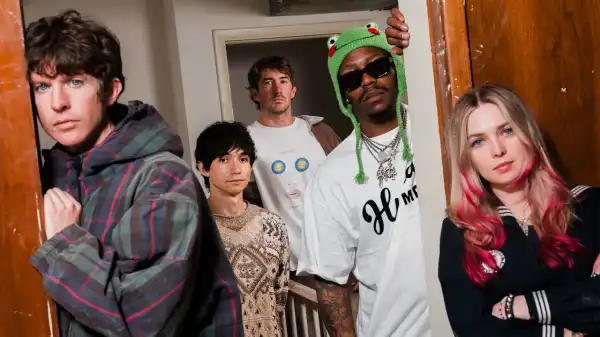
Save this storySave this storySave this storySave this story
Two months ago, the world lost a gruff, powerful guitarist named Al Barile. He was sixty-three when he died after a battle with cancer, and those who mourned him often expressed grief for his work ethic as much as his riffs, if not more. For several years in the Eighties, he was the leader of a powerful Boston band called Society System Decontrol, or SS Decontrol, or SSD, an acronym that might as well have been a paramilitary organization, as the band and its followers sometimes suggested: The cover of the band’s landmark 1982 debut album, The Kids Will Have Their Say, featured a small crowd of young men hurrying up the steps of the Massachusetts State House. The political message was vague, and intentionally so. SSD’s allegiance was not to a particular ideology but to a genre called hardcore punk rock, though no one called it that. It was simply “hardcore,” shorthand for a strain of punk music that had been tempered, simplified, adapted for American ears, and weaponized. A few years ago, Nancy Barile, Al’s wife, published a memoir, I’m Not Holding Your Coat, in which she recounted how “scary” Barile looked when she first saw his photograph: “a big, muscular guy with a shaved head.” And the band’s lead singer, known as Springa, later recalled that Barile’s original vision for the band was downright dark. “This isn’t going to be a cool band where people get on the dance floor and shake their asses,” Barile told him. “We’re making a statement here, and it’s about being anti-establishment, anti-social, anti-conformist, and breaking down the boundaries between the band and the audience.”
Hardcore, like many self-consciously underground communities, rejected the larger society in favor of creating its own, narrower one, which turned out to lead to a significant level of conformity, after all—those Boston hardcore kids on the steps of the State Department all dressed roughly the same, in jeans and dark jackets. The scene was willing to break down some barriers and just as willing to erect others, drawing both strength and intimacy from the fact that a select few were inside and the majority were outside. (Baril, who wrote the lyrics for SSD, also subscribed to the anti-drug philosophy known as straight edge, though it’s possible that not all of his bandmates were as abstinent.) In SSD’s case, the tribe held together fiercely for a few years, then broke up. No one knew what else a hardcore band was supposed to do once it had established its ferocity. In 1984, SSD released How We Rock, which was slower and less furious than its predecessors, and received mixed reviews. (A review in Maximum Rocknroll, an influential punk fanzine, said, “It’s a short album, but it’s long.”) The band broke up the following year, and, according to Nancy, Barile made the deal that marked the end of an era: He sold his music equipment and bought a jet ski.
I was reminded of Baril’s Jet Ski a few days ago while watching the lengthy video accompanying the new album by Turnstile, a Maryland band that has found creative ways to expand on hardcore’s legacy. The video begins, as it should, with lead singer Brendan Yates riding around on his personal Jet Ski—not technically a Jet Ski, perhaps, but close enough to make some hardcore fans uneasy. Turnstile may be the most popular hardcore band of all time, depending on how you define “popular” or “hardcore.” The genre’s ’80s pioneers never came close to reaching the pop charts, though a couple of bands with hardcore roots, the Beastie Boys and Rage Against the Machine, have thrived away from the scene. Turnstile still uses a music-specific URL, turnstilehardcore.com, and the new album is an impressive homage to the genre: alternately hazy and fiery, like someone dreaming of a hardcore album.
Yates grew up in suburban Maryland, and has said he found hardcore “scary” when he first encountered it in the early 2000s. But with Turnstile, he’s created a friendly, accessible take on the genre that he enjoys. When I asked him recently if there was anything about his band that might intimidate new listeners, he suggested that they might instead experience “intensity” or “a shared collective energy.” “I think the scariness has evolved over time,” he added. It’s worth noting that NEVER ENOUGH includes not only extended ambient passages, but also several songs that Barile might dismiss as “groovy”: one, “DREAMING,” features a drum pattern based on reggaeton’s dembow rhythm; another, “LOOK OUT FOR ME,” cycles through fury and bliss before soaring into a groove that evokes the dance music of the band’s hometown of Baltimore
Sourse: newyorker.com